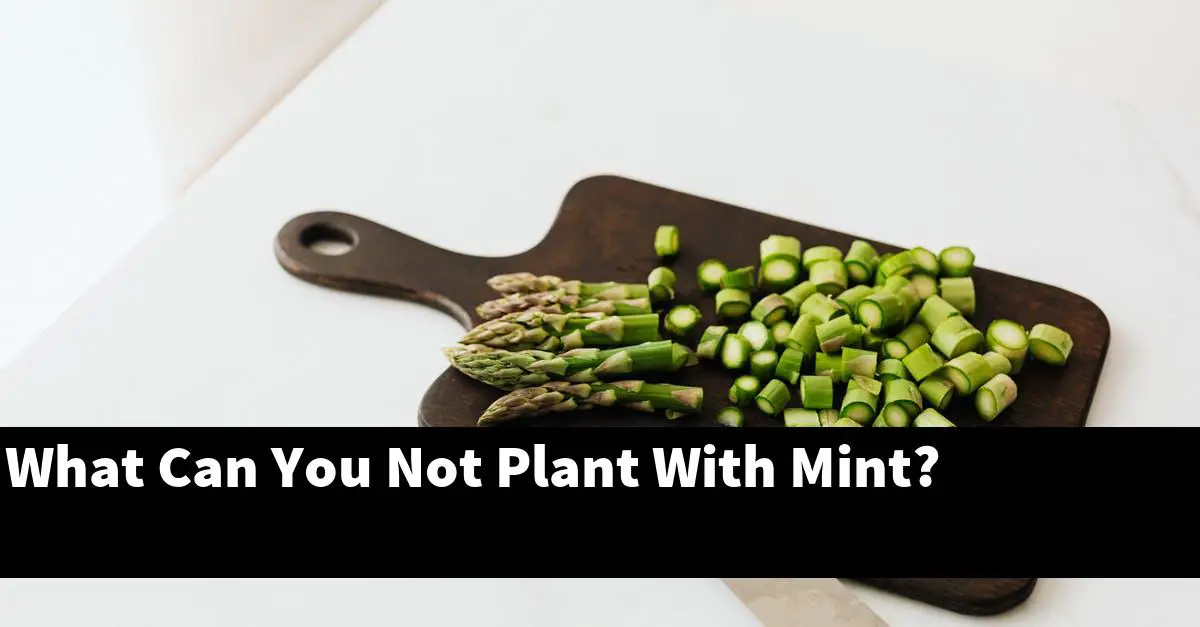Mint is a versatile herb that can be used in many different dishes, but there are some things that you cannot plant with mint. Mint is a very aggressive plant and will take over any other plant that it is planted with.
This is why you cannot plant mint with other herbs or vegetables.
What herbs to plant with mint?
Mint is a great herb to plant with because it is a hardy perennial that is known for its strong flavor and aroma. Mint is a good herb to plant in gardens or pots because it can grow in a variety of soils and climates.
Some popular varieties of mint to plant include spearmint, peppermint, wintergreen, and lavender mint.
Will mint kill other plants?
Mint is a perennial herbaceous plant that belongs to the Lamiaceae family. It is native to temperate areas of the world, including Europe, Asia, and North America.
Mint is a hardy plant and can be grown in a variety of soil types.
Mint is not known to be a plant killer. However, mint can be a problem if it is overgrown or if it is planted in areas where it will compete with other plants.
Mint can also be a problem if it is used in place of something else, such as a weed, that is needed in a garden.
What flowers can you plant with mint?
Mint is a versatile plant that can be planted in many different areas of the home. Some of the flowers that can be planted with mint are daisy, rose, spider plant, and jade plant.
What can you plant with mint companion plants?
Mint is a great plant to plant with companions because it can help to clean up air pollution, enhance the flavor of other plants, and deter pests. Additionally, mint can be used as an herb or spice to add flavor to food.
Can you plant mint with potatoes?
Mint is a cool-season perennial that can be planted with potatoes in most regions of the United States. Mint is an annual herb that can grow up to 1 foot tall.
It has a stout, fibrous stem and narrow leaves. The leaves are opposite and have serrated margins.
The flowers are small, white, and fragrant. Mint can be propagated from root cuttings or by division.
Does mint affect other plants?
Mint (Mentha x piperita) is a herbaceous perennial plant species in the mint family. It is a popular garden plant, used both for its edible leaves and flowers.
Mint is not particularly invasive and does not compete with other plants for resources. However, mint can be a problem for some other plants because it can spread aggressively by underground rhizomes, and its leaves and flowers can be a nuisance to other plants because they can be a source of plant pests.
Can you plant mint in a pot?
Mint is a perennial herb that can be grown in a pot. Mint can be propagated by root cuttings or by stem cuttings.
Mint should be planted in a well-drained soil and should be watered regularly.
Does mint have horizontal roots?
Yes, mint has horizontal roots. These roots grow horizontally and spread outwards into the soil to find water and nutrients.
This helps to keep the plant healthy and growing quickly.
Can you plant lavender and mint together?
There is some debate over whether or not you can plant lavender and mint together. The answer largely depends on the variety of lavender and mint you are growing.
Many lavender varieties are not too tolerant of mint, while other mint varieties can tolerate lavender. You can try growing both plants in separate containers and see how they do, but it is generally recommended that you keep them apart.
What plants grow well next to mint?
Mint is a cool-season annual that can be grown in most areas of the United States. It prefers well-drained soil and can be planted in a sunny or shaded location.
Mint can be propagated by dividing the rootball or by rooting cuttings taken from a healthy plant.
Can you plant mint with peppers?
Mint is a great addition to a vegetable garden because it grows quickly, can tolerate tough conditions, and produces a delicious fragrance. Peppermint is a member of the mint family, and can be planted next to peppers in a vegetable garden.
Peppermint grows in a variety of soil types, but prefers well-drained soil. Growing mint is easy; all you need is a little soil, some water, and some mint plants.
What herbs should not be planted near mint?
Mint is a member of the mint family and should not be planted near other plants that are in the mint family. These plants include peppermint, spearmint, and wintergreen.
These plants can cross-pollinate and create a plant that is not minty, but has other plants in the mint family growing nearby.
Can you plant mint with sunflowers?
Sunflowers and mint can be planted together successfully, but there are a few things to keep in mind. First, make sure that the soil pH is right for both plants.
Mint prefers a soil pH of 6.0 to 7.5, while sunflowers need a soil pH of 5.5 to 6.5. Second, make sure that the plants are positioned so that they can get enough sunlight. Mint plants typically need more sunlight than sunflowers, so it’s important to position them accordingly.
Finally, be sure to water both plants regularly. Over- watering can cause root damage to mint, while not watering sunflowers enough can cause them to go dormant and die.
Conclusions
According to the text, mint should not be planted with onions, beans, or cabbage. This is because mint will spread quickly and crowd out these other plants.
Additionally, mint may also make these other plants taste bad.

